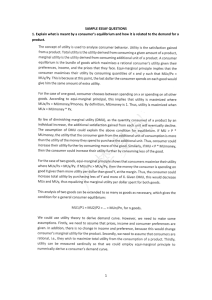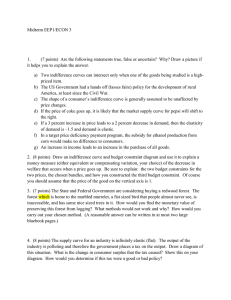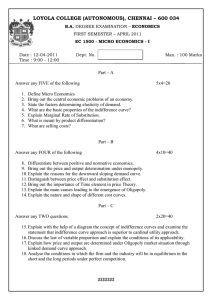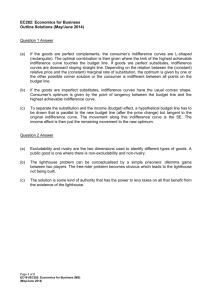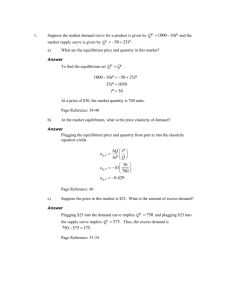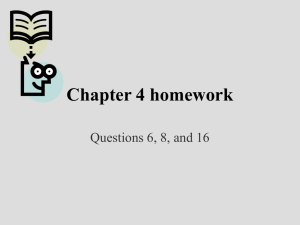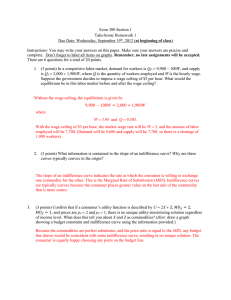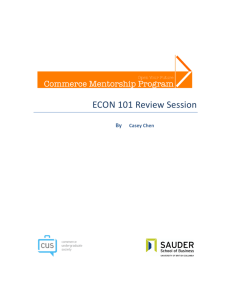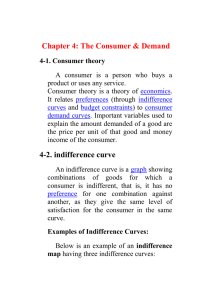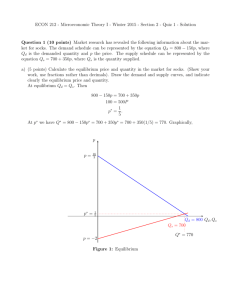Microeconomic Theory of Fertility: Comparative Statics
advertisement
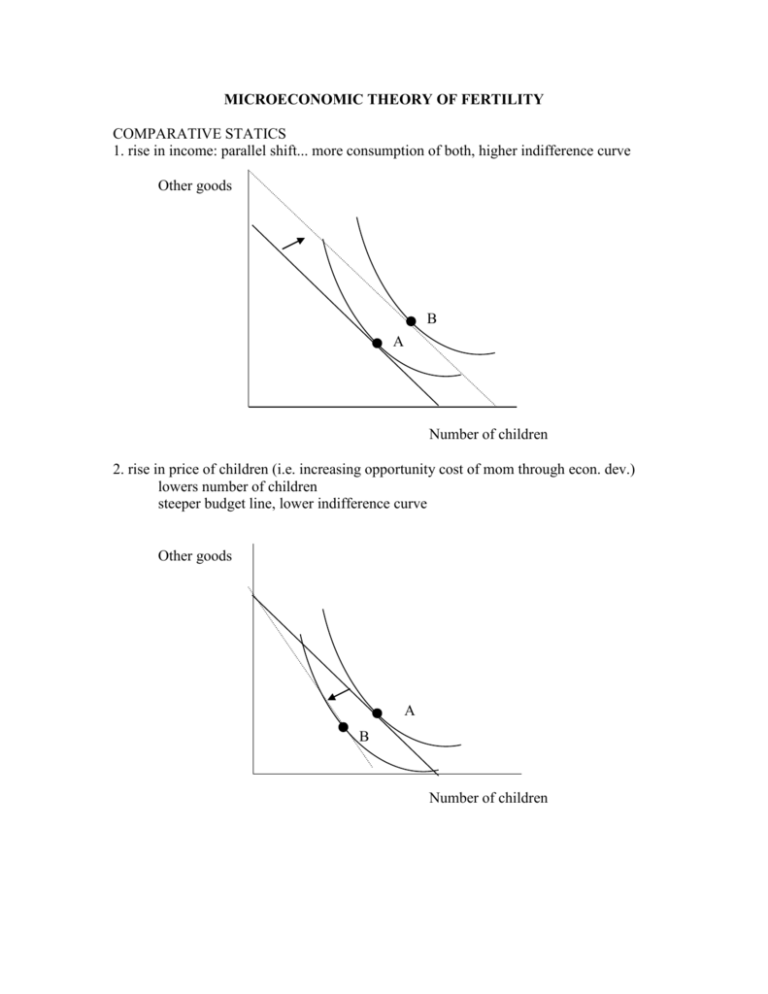
MICROECONOMIC THEORY OF FERTILITY COMPARATIVE STATICS 1. rise in income: parallel shift... more consumption of both, higher indifference curve Other goods B A Number of children 2. rise in price of children (i.e. increasing opportunity cost of mom through econ. dev.) lowers number of children steeper budget line, lower indifference curve Other goods A B Number of children 3. As countries with high population growth rates develop, it may be desirable to increase income while lowering population growth and increasing utility. Is this possible using fertility theory? YES, but only under special circumstances: Suppose that income increases AND the price of children becomes higher. Depending on the way we draw the graph (how far we shift the curve, how steep we draw it, the shape of the indifference curve), it is POSSIBLE have greater income, fewer children, and a higher indifference curve: Other goods B A Number of children However, it is also possible to draw the graph with greater income and MORE children if income increases alot: Other goods B A Number of children Alternatively, if the price of children increased alot, and income increased marginally, it might be possible to have fewer children but be on a lower indifference curve.
